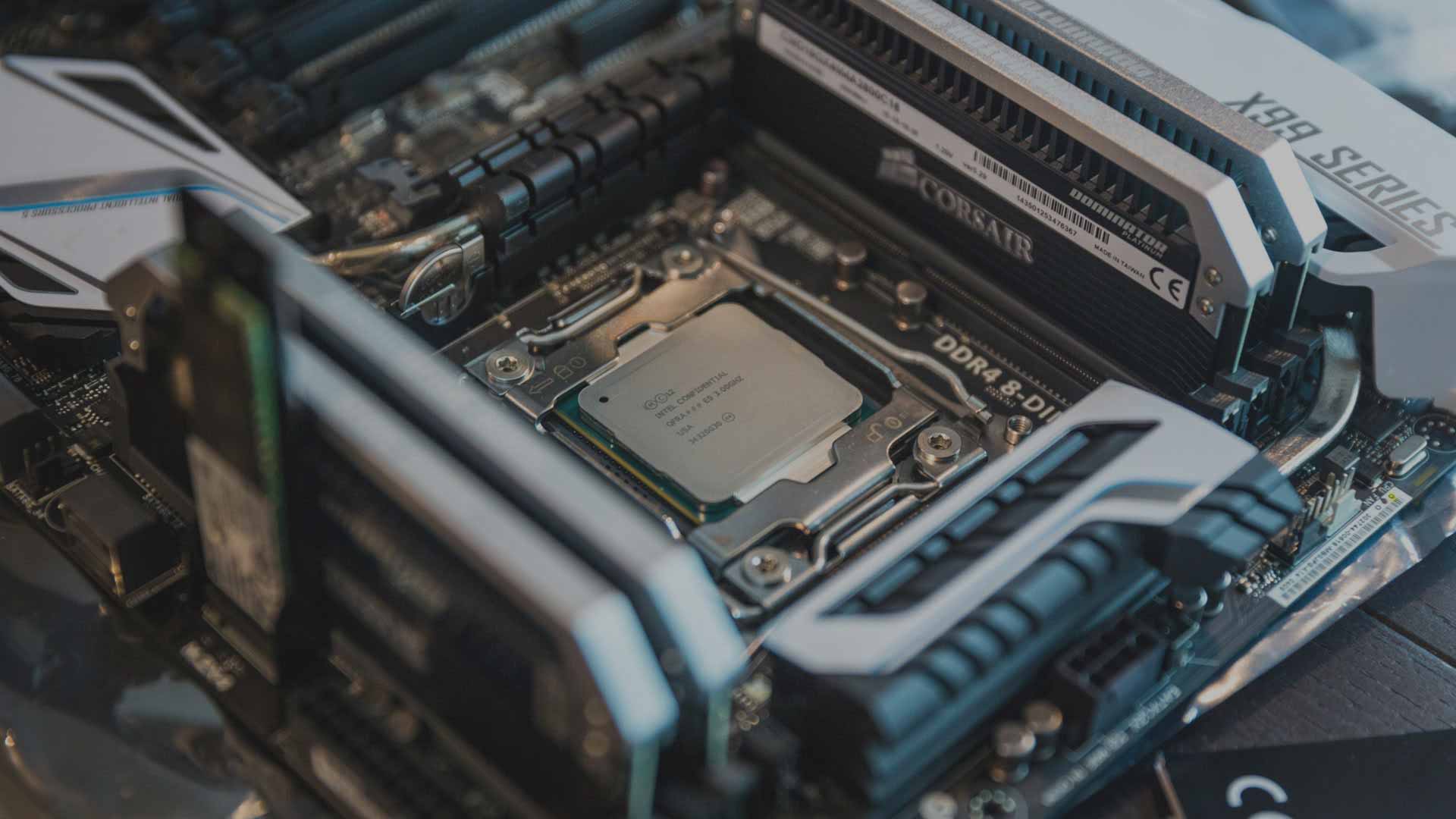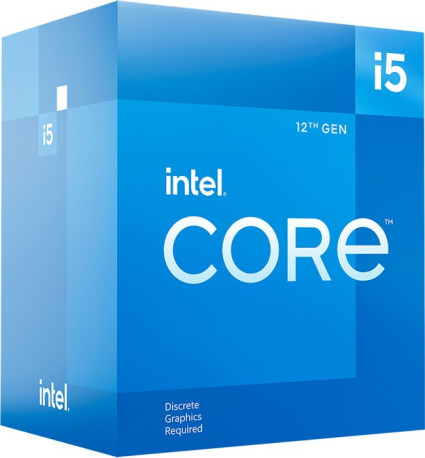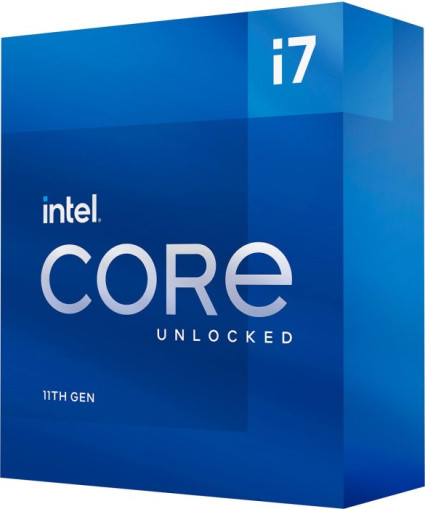
Intel Core i5-12400F vs. Intel Core i7-11700K
In diesem Vergleich von Intel Core i5-12400F versus Intel Core i7-11700K vergleichen wir die technischen Daten der beiden CPUs. Welcher Prozessor ist schneller? Hier gibt es FPS & Benchmarks in Gaming und Anwendungen.
Hinweis: Unsere Links sind Affiliate Links. Wir erhalten beim Kauf eine kleine Provision, ohne dass sich euer Preis erhöht.

Allgemeine Informationen
| Günstigster Preis |
|
|
| Serie | Intel Core i-12000 | Intel Core i-11000 |
| Chip-Architektur | Golden Cove | Cypress Cove |
| Codename | Alder Lake-S | Rocket Lake-S |
| Produktname | Intel Core i5-12400F | Intel Core i7-11700K |
Spezifikationen
Die Anzahl der Rechenkerne, die maximale Taktrate und die Größe des Cache können sich auf die Leistung in Spielen und Anwendungen auswirken. Mit 6 Kernen bietet der Intel Core i5-12400F deutlich weniger Kerne als der Intel Core i7-11700K mit 8 Rechenkernen. Der maximale Takt liegt beim Intel Core i5-12400F mit 4.40 GHz niedriger als beim Intel Core i7-11700K mit 5.00 GHz. Der Cache ist beim Intel Core i5-12400F mit 7.5 MB L2-Cache + 18 MB L3-Cache zu 4 MB L2-Cache + 16 MB L3-Cache deutlich höher als beim Intel Core i7-11700K.
| Kerne (Gesamt) | 6 | 8 |
| Threads | 12 | 16 |
| Anzahl P-Cores | 6C | 8C |
| Anzahl E-Cores | - | - |
| Basis-Takt | 2.50 GHz | 3.60 GHz |
| Takt P-Cores | 2.50 GHz | 3.60 GHz |
| Takt E-Cores | - | - |
| Turbo-Takt | 4.40 GHz | 5.00 (Turbo Boost Max 3.0) GHz |
| Turbo P-Cores | 4.40 GHz | 5.00 (Turbo Boost Max 3.0) GHz |
| Turbo E-Cores | - | - |
| Gesamter L2-Cache | 7.5 MB | 4 MB |
| Gesamter L3-Cache | 18 MB | 16 MB |
| Fertigung | Intel 7 | Intel 14 nm+++ |
| Rechenleistung | - | - |
| Leistungsaufnahme (TDP) | 65W (Processor Base Power) 117W (Maximum Turbo Power) |
125W 95W cTDP-down (3.10GHz) |
Mainboard-Kompatibilität
Während der Intel Core i5-12400F den Intel 1700 Sockel nutzt, ist der Intel Core i7-11700K mit Mainboards für den Sockel Intel 1200 kompatibel. Die genaue Chipsatz-Eignung und die unterstützten PCIe-Lanes können Sie der Tabelle entnehmen.
| Sockel | Intel 1700 | Intel 1200 |
| Chipsatz-Eignung | B660, B760, H610, H610E, H670, H770, Q670, Q670E, R680E, W680, Z690, Z790 | B560, H470, H510, H570, Q470, W480, W580, Z490, Z590 |
| PCIe-3.0-Lanes | - | - |
| PCIe-4.0-Lanes | 4x | 20x |
| PCIe-5.0-Lanes | 16x | - |
RAM-Kompatibilität
Während Sie beim Intel Core i5-12400F bis zu 128 GB vom Typ DDR4/DDR5 im Dual Channel verbauen können, unterstützt der Intel Core i7-11700K bis zu 128 GB DDR4 Arbeitsspeicher.
| Speicher-Controller | DDR4/DDR5 | DDR4 |
| Anzahl Speicherkanäle | Dual Channel | Dual Channel |
| max. Speichermenge | 128 GB | 128 GB |
| ECC-Unterstützung | - | - |
Grafik
| iGPU | - | ✓ |
| iGPU-Modell | - | Intel UHD Graphics 750 |
| iGPU-Takt | - | 0,35-1,30GHz |
| iGPU-Einheiten | - | 2Xe/32EU/256SP |
| iGPU-Rechenleistung | - | 0.67 TFLOPS (FP32) |
| iGPU-Architektur | - | Xe-LP / Gen 12.1, Codename "Rocket Lake GT1" |
| iGPU-Interface | - | DP 1.4a (5120x3200@60Hz), eDP 1.4a (5120x3200@60Hz), HDMI 2.0b (4096x2160@60Hz) |
| iGPU-Funktionen | - | 3x Display Support, Intel Clear Video HD, Intel InTru 3D, Intel Quick Sync Video, AV1 decode, H.265 encode/decode, VP9 encode/decode, HDCP 2.3, DirectX 12.1, OpenGL 4.5, OpenCL 3.0, Vulkan 1.0, max. 64GB iGPU-Speicher |
Sonstiges
| Freier Multiplikator | - | ✓ |
| Stepping | C0/H0, Spec Code: SRL4W/SRL5Z | B0, Spec Code: SRKNL |
| Heatspreader-Kontaktmittel | Metall/verlötet | Metall/verlötet |
| Temparatur max. | 100°C (Tjunction) | 100°C (Tjunction) |
| Fernwartung | - | ✓ (Intel vPro) |
| Einführung | 2022/Q1 (4.1.2022) | 2021/Q1 (30.3.2021) |
| Herstellergarantie | 3 Jahre bei Intel® Boxed-Prozessoren (Info DE/Info EN) | 3 Jahre bei Intel® Boxed-Prozessoren (Info DE/Info EN) |
CPU-Funktionen
| AES-NI | ✓ | ✓ |
| AVX | ✓ | ✓ |
| AVX2 | ✓ | ✓ |
| Boot Guard | ✓ | ✓ |
| CET | ✓ | - |
| DL Boost | ✓ | ✓ |
| EIST | ✓ | ✓ |
| GNA 3.0 | ✓ | - |
| Idle States | ✓ | ✓ |
| Instruction Set | ✓ | ✓ |
| ISM | ✓ | - |
| MBEC | ✓ | - |
| Optane Memory Support | ✓ | ✓ |
| OS Guard | ✓ | ✓ |
| Secure Key | ✓ | ✓ |
| Speed Shift | ✓ | - |
| SSE4.1 | ✓ | ✓ |
| SSE4.2 | ✓ | ✓ |
| Thermal Monitoring | ✓ | ✓ |
| VMD | ✓ | - |
| VT-d | ✓ | ✓ |
| VT-x | ✓ | ✓ |
| VT-x EPT | ✓ | ✓ |
| XD Bit | ✓ | ✓ |
Spiele

- Intel Core i7-11700KAVG115.66 %1%114.14 %
- Intel Core i5-12400FAVG100.00 %1%100.00 %

- Intel Core i5-12400FAVG113.4 FPS1%79.5 FPS
- Intel Core i7-11700KAVG179.7 FPS1%120.5 FPS

- Intel Core i5-12400FAVG389.4 FPS1%227.7 FPS
- Intel Core i7-11700KAVG451.8 FPS1%264.5 FPS

- Intel Core i5-12400FAVG119 FPS1%78 FPS
- Intel Core i7-11700KAVG140.2 FPS1%87.3 FPS

- Intel Core i5-12400FAVG166 FPS1%111.3 FPS
- Intel Core i7-11700KAVG181.5 FPS1%133.5 FPS

- Intel Core i5-12400FAVG118.2 FPS1%85.3 FPS
- Intel Core i7-11700KAVG126.8 FPS1%88.7 FPS

- Intel Core i5-12400FAVG184 FPS1%114.1 FPS
- Intel Core i7-11700KAVG207.8 FPS1%131.1 FPS

- Intel Core i5-12400FAVG66.5 FPS1%50.5 FPS
- Intel Core i7-11700KAVG70.5 FPS1%46.9 FPS

- Intel Core i5-12400FAVG191.2 FPS1%108.8 FPS
- Intel Core i7-11700KAVG186.3 FPS1%110.7 FPS

- Intel Core i7-11700KAVG0.62 FPSIntel Core i5-12400FAVG1.56 FPS

- Intel Core i7-11700KAVG1.98 FPSIntel Core i5-12400FAVG3.09 FPS
Produktivität
Produktivität

- Intel Core i7-11700KAVG115.68 %Intel Core i5-12400FAVG100.00 %

- Intel Core i7-11700KPKT88592 PunkteIntel Core i5-12400FPKT63779 Punkte

- Intel Core i7-11700KPKT1106 PunkteIntel Core i5-12400FPKT1028 Punkte

- Intel Core i7-11700KPKT713 PunkteIntel Core i5-12400FPKT605 Punkte

- Intel Core i7-11700KSEK400 SekundenIntel Core i5-12400FSEK499 Sekunden

- Intel Core i7-11700KPKT767 PunkteIntel Core i5-12400FPKT616 Punkte

- Intel Core i7-11700KPKT2533 PunkteIntel Core i5-12400FPKT2247 Punkte

- Intel Core i7-11700KPKT11337 PunkteIntel Core i5-12400FPKT10438 Punkte

- Intel Core i7-11700KSEK99 SekundenIntel Core i5-12400FSEK121 Sekunden




